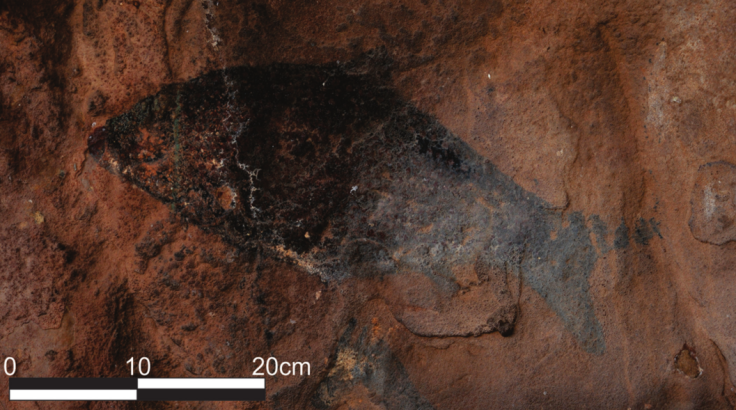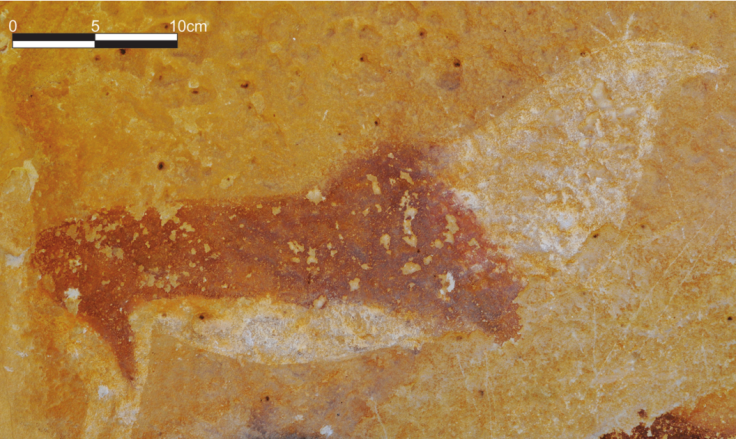Earliest dated rock art in Southern Africa depicts shamans' journey to the world of the spirits
For the first time, researchers have directly dated rock art in Lesotho, Botswana and South Africa.
For years, archaeologists have known that southern Africa is home to very rich and well-understood rock art produced by hunter-gatherers in the Later Stone Age, but they had been unable to date these creations precisely.
Using an innovative approach, researchers have now come up with new dates, which suggest that in south-eastern Botswana, rock art was created as far back as 5723–4420 cal BP – the oldest such evidence found to date in Southern Africa. Their complete findings are now published in the Journal Antiquity.
Hunter-gatherer rock art in Southern Africa is made up both of paintings and engravings, which were produced by ancient communities associated with the present-day San (bushmen) culture. A lot of research has been successfully conducted about how to interpret this art.
"Thanks to studies conducted between the 18<sup>th and 20<sup>thby the Dutch and British settlers as well as current ethnographic research, we have a good understanding of San rock art. They painted to represent what the Shamans had seen during their journeys in the world of the spirits so that the rest of the population could see it", lead author Adelphine Bonneau, post-doctoral fellow at Laval University (Canada), told IBTimes UK.
"They also thought that rocks represented a veil between the world of humans and the spiritual world, and so rock art was thought to help them communicate with the spirits".
Despite these interesting insights, researchers have been limited in their work by the impossibility to accurately and directly date the artworks.
The difficulty of dating rock art
Dating rock art directly is about coming up with a precise date for when it was created. This often entails taking a piece of the painting out to study it – potentially damaging it.
"With current dating methods, we need large samples – sometimes hundreds of milligrams of painting – which often means completely destroying these artworks. We also have to consider that in many cases, the art wasn't protected inside caves and rock shelters but created on outdoors rocks exposed to the elements and to human activity, which means that paintings are often in a bad state and cannot be dated", Bonneau explained.
The most common dating method is radiocarbon dating (Carbon-14 dating) but for it to be used, there needs to be traces of carbon in the paintings. Additionally, where charcoal was used to create paintings, there is always the possibility that the artists used charcoal that had been left over from many years before, so the painting may appear older than it really is.

All of these obstacle have made it hard to establish precise dates for rock art found in Southern Africa. Paintings in the Apollo 11 cave in Namibia have been dated to 25,000 years ago, but these results are highly controversial. Elsewhere, archaeologists have only been able to set very broad time constraints.
A new method to date rock paintings
The authors of this study have, for the first time, attempted to date southern African rock art with a technique known as accelerator mass spectrometry (AMS) radiocarbon dating. The idea is to use the same principles as traditional radiocarbon dating, but a much smaller sample of painting is necessary.
The team worked at 14 sites in three regions of southern Africa - the Thune Dam area of south-eastern Botswana, the Metolong Dam catchment of western Lesotho and the Maclear District of South Africa's Eastern Cape Province.
To increase the chances of AMS radiocarbon dating working, the scientists came up with an innovative and rigorous scientific protocol. They first collected very small painting samples (around 0.5mm2), after requesting the authorisation of the San people who still use the rock art during rituals.
They used these fragments to learn about the paintings' overall composition, to select those with a higher likelihood of being successfully dated. It also allowed them to identify paintings made up of carbon derived from short-lived organic materials rather than from charcoal, to avoid the issue that the charcoal used in paint may be significantly older than the painting event itself.
Finally, the scientists used advanced chemical techniques to clean up the samples, to avoid them being polluted by radiocarbon contaminants.

Following these strict steps allowed them to establish the first direct dates for rock art in South Africa. They identified the oldest paintings documented to date in the region – rock art in Botswana dating from about 5723–4420 cal BP.
"This is a really novel approach as far as African rock art (and Southern Africa in particular) is concerned, with vastly improved protocols for ensuring the highest quality results. The techniques developed have potential to be used elsewhere in the world. More than their actual age, what is important here is that we are now sure of these paintings' dates".
Learning about San culture
The findings could also improve scientists' knowledge of the hunter-gatherer society that produced the art, and of the San culture living in Southern Africa.
Until this study, it had been impossible to associate any of the rock art with specific archaeological artefacts found close by. With the art now more accurately dated, it will be possible to study how potteries and other objects evolved in parallel to rock art.
"These dates are only the beginning of these investigations, but they open up the possibility of initiating a dialogue between the art of the San and their archaeological remains. Since rock art reflected their spiritual world, we may get new insights on their society and the cultural and spiritual connections they shared with other tribes", Bonneau said.
© Copyright IBTimes 2025. All rights reserved.






















